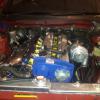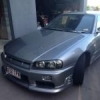Will I Need An Aftermarket Fuel Pressure Regulator?
Announcements
-
Similar Content
-
Latest Posts
-
Holy smokes brother. If you get there before me, let me know if that was manageable with a hone. I still haven't done anything with mine and probably won't until I get the car MOT'd later this year so that I have another 2 years to do what ever needs to be done. I am at 86.5 now so at least I have the 0.5mm to go up from where I am, but that means new pistons at the very least. Honestly, might consider a stroker at that point. Cheers
-
It's the adhesive holding the ceramic wheel to the shaft the fails on 90% of them.
-
By joshuaho96 · Posted
Foreign debris, physical shock, boost leak, could be anything honestly. The danger in taking all the timing out of a tune/hitting the R&R corner is that even if the engine doesn't detonate your turbo is taking a lot of abuse from high EGT. Also, even if nothing goes wrong it is a journal bearing that is spinning at 100k RPM on boost. Eventually it goes through enough cold start/pressure cycles to wear it out. -
I kinda accidentally saw this, and was interested, but It actually seems to replaces the whole center computer, using the existing screen and buttons. AND it may only be for a G37 and not compatible with a Japanese 370. So its not for me, but someone else may be interested to look into it. Its about $680USD. If I am understanding it right, it basically replaces/installs and android pc that integrates with the existing screen. But I could be wrong. https://gromaudio.com/vline/ The video I first saw was the following, with very little and unclear details. Even if your not interested in the system, the video on their site was pretty comforting in showing how simple the whole centre comes out
-
hfygrte52 what side you looking for? Do you care what color car it's off? Found a white LH side on here: https://skylinespares.com.au/product/nissan-skyline-r33-coupe-rear-tail-light/ Aussie parts place but will ship to USA. Maybe get it before there's a tarrif on 25yo shit box parts
-






Recommended Posts
Create an account or sign in to comment
You need to be a member in order to leave a comment
Create an account
Sign up for a new account in our community. It's easy!
Register a new accountSign in
Already have an account? Sign in here.
Sign In Now